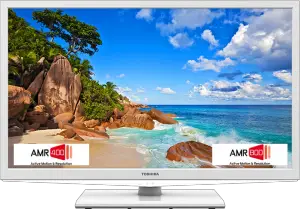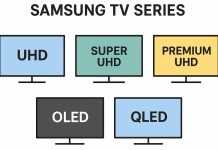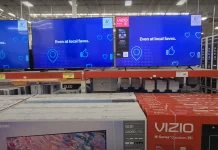What is Active Motion Resolution TV Toshiba
Toshiba’s Active Motion & Resolution technology improves dynamic scenes when watching TV. But in fact, since Toshiba has stopped making TVs and sold its business, the use of advanced image processing technology is highly questionable.
The company’s website gives the following description of this technology: To get a smooth and clear picture of motion on the screen, the processor calculates an additional “picture” – an intermediate image and increases the total number of frames per second, that is, the frequency of c ACTIVE MOTION & RESOLUTION 800, the number of images increases several times, resulting in a smoother picture. But that’s not exactly true, and I’ll tell you why in a moment.
You should know that all the numbers 800, 1000, 1200, 1400 are just made-up numbers, but the higher they are, the better the TV should process the image, in fact the TV processes almost nothing, for the very simple reason of not enough CPU power and RAM.
Active Motion & Resolution, a standard technology designed to improve the picture display on your TV screen, especially in active, fast-paced scenes shot at a low frame rate of 24-30 fps, and it works like this.
How Active Motion & Resolution Works
It uses very primitive image processing technology, and AMR only works if you’re watching video at a low frame rate, less than 30 frames per second. You should know that analog TV had 24 frames, so if you are watching an old TV show that has 24 frames, you can increase the frame rate by doing the following
Adding an identical frame, some frames are shown multiple times.
Add additional frames created from two adjacent frames (which is very questionable because it requires a lot of CPU processing power, TVs have the simplest, low-power processors).
Disable backlighting – uses disabling the backlight for the duration of a single frame. This improves picture clarity.
Does AMR work in videos at 60 frames or more
You should know that in videos with a frame rate of 60 Hz or more, this technology simply does not work, the frame rate is quite enough to show a quality image. This technology is, in fact, a marketing ploy to make the TV stand out from previous models. After all, the buyer can always say: here is a TV model with AMR 400, and this one with AMR 1000. In fact, when buying a TV, it’s best to pay attention to picture quality, not AMR.
Thus, 200, 400, 600, 800 Hz. does not correspond to reality and misleads the buyer, so Hertz have been removed from the specifications. And as a result, the Active Motion & Resolution indicator became denoted simply in units. But I would advise not to pay attention to these figures at all. Unfortunately, after licensing the brand to OEMs. Toshiba TVs have shifted into the segment of cheap mid-range TVs, which will fall further and further behind the leaders in technology.






